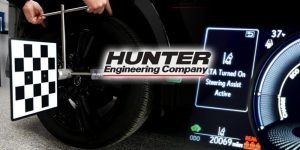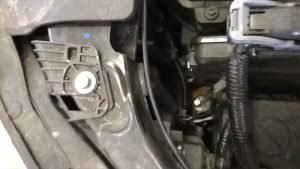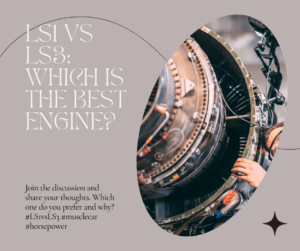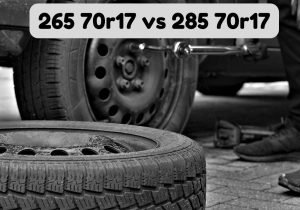Contents
Introduction
When it comes to enhancing your car’s performance and handling, the choice between Limited Slip and Posi Traction differentials is crucial. These two technologies offer distinct advantages, and selecting the right one can greatly impact your driving experience. In this article, we will explore the differences between Limited Slip and Posi Traction differentials, helping you make an informed decision for your vehicle.
Limited Slip vs. Posi Traction: Choosing the Right Grip for Your Ride
Both limited slip and Posi Traction (a trademark by General Motors for limited slip differentials) enhance grip and traction, but they have subtle differences. Here’s a table to help you navigate the choice:
| Feature | Limited Slip | Posi Traction |
|---|---|---|
| Function: | Controls the difference in speed between left and right wheels to limit wheelspin | Similar, but can offer more progressive locking and higher torque transfer |
| Types: | Clutch-type, viscous-type, torque-sensing, electronic | Primarily clutch-type (like G80, Eaton LSD) |
| Locking Engagement: | Gradual or sudden depending on type | Can offer smoother and more predictable engagement |
| Performance: | Improves traction in slippery conditions, enhances cornering and acceleration | Offers similar benefits, but potentially with better handling and performance on uneven terrain |
| Fuel Efficiency: | Minimal impact | Less efficient due to increased internal friction |
| Maintenance: | Varies depending on type, some require specific lubricants or rebuilds | Generally low maintenance, similar to a standard differential |
| Cost: | Can vary depending on brand and type, generally less expensive than Posi Traction | Generally more expensive due to brand recognition and performance focus |
| Applications: | Ideal for everyday driving with occasional slippery conditions, light off-road use | More suited for performance enthusiasts, serious off-roaders, and vehicles with higher torque |

Additional Considerations:
- Vehicle compatibility: Ensure the chosen differential fits your specific car model and drivetrain.
- Driving style: If you prioritize fuel efficiency and everyday driving, a basic limited slip might suffice. For performance or extreme conditions, Posi Traction could be better.
- Budget: Limited slip options are generally more affordable, while Posi Traction often carries a premium price tag.
Overall:
- Limited slip: A versatile and cost-effective option for general traction improvement.
- Posi Traction: Offers higher performance and smoother engagement, but at a higher cost and potentially lower fuel efficiency.
Limited Slip Differential
Understanding Limited Slip
A Limited Slip Differential, often abbreviated as LSD, is a mechanism that allows power to be distributed unequally between the two drive wheels. It offers a compromise between a fully open differential and a locked one. LSDs use a set of clutches or viscous couplings to provide resistance to wheel spin, ensuring that power is transferred to the wheel with more traction.
Advantages of Limited Slip
- Improved Traction: Limited Slip Differentials provide better traction on slippery surfaces, making them ideal for driving in rain or snow.
- Enhanced Cornering: LSDs allow for better control during sharp turns, reducing the chances of skidding.
- Versatility: They are suitable for both on-road and off-road driving, making them a versatile choice.
Is Limited Slip Right for You?
Consider a Limited Slip Differential if you frequently drive in adverse weather conditions or want improved control during spirited driving on twisty roads.
Posi Traction Differential
Understanding Posi Traction
Posi Traction, also known as a Positraction or simply Posi, is a brand name for a type of limited-slip differential. It operates similarly to an LSD but uses a different design to achieve the same goal: transferring power to the wheel with traction.
Advantages of Posi Traction
- Equal Power Distribution: Posi Traction differentials ensure equal power distribution between the wheels, improving overall traction.
- Better Straight-Line Acceleration: They excel in providing power to both wheels simultaneously, enhancing acceleration.
- Durability: Posi Traction units are known for their durability and ability to handle high torque loads.

Is Posi Traction Right for You?
Choose Posi Traction if you’re looking to improve straight-line acceleration and overall traction, making it an excellent choice for drag racing and high-performance applications.
FAQs
Q: What is the main difference between Limited Slip and Posi Traction?
A: The key difference lies in how they distribute power. Limited Slip provides unequal power distribution, while Posi Traction ensures equal power distribution between the wheels.
Q: Can I install Limited Slip or Posi Traction in my existing car?
A: Yes, both Limited Slip and Posi Traction differentials can be retrofitted into many vehicles, depending on compatibility.
Q: Are LSDs or Posi Traction differentials more expensive?
A: Prices can vary, but typically, Posi Traction units tend to be more affordable due to their simpler design.
Q: Which one is better for off-road driving?
A: Limited Slip Differentials are better suited for off-road adventures due to their ability to handle uneven terrain.
Q: Do these differentials require special maintenance?
A: Regular maintenance is essential for both types to ensure optimal performance and longevity.
Q: Can I upgrade my stock differential to a higher-performance version?
A: Yes, upgrading to a performance-oriented Limited Slip or Posi Traction differential can enhance your car’s capabilities.
Conclusion
In the world of automotive differentials, the choice between Limited Slip and Posi Traction is not a one-size-fits-all decision. It depends on your driving needs, preferences, and the type of vehicle you own. Whether you seek improved traction in adverse conditions or enhanced acceleration for high-performance driving, both options have their merits. Take the time to evaluate your requirements and make an informed choice to optimize your car’s performance.
============================================
Affiliate Disclosure: As an Amazon Associate, I earn from qualifying purchases made through links on this site.










